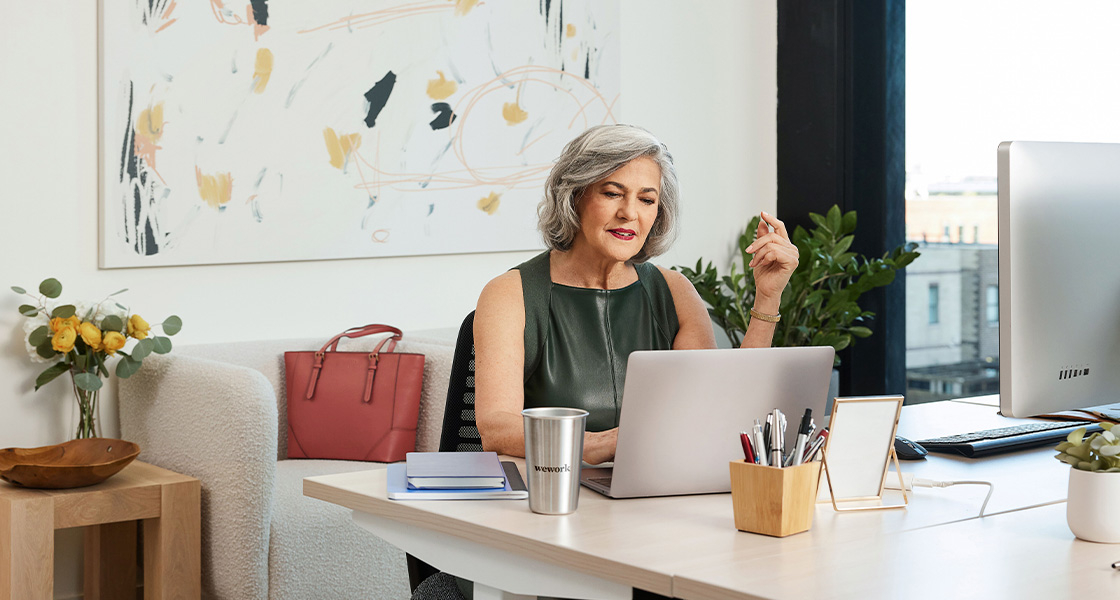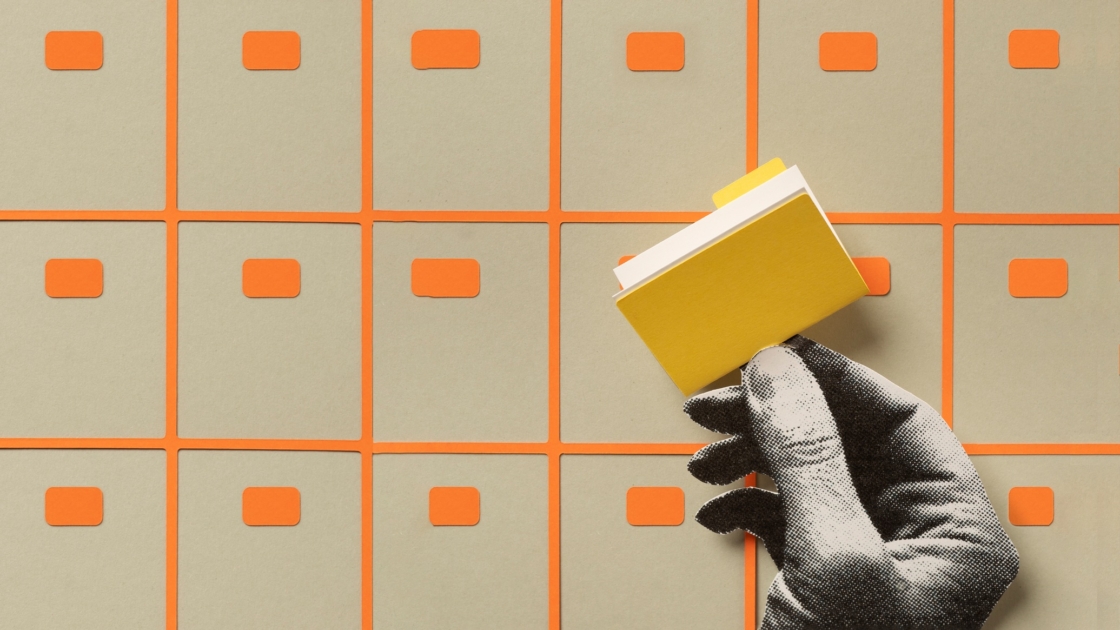Every election year, millions of Americans do not take advantage of their right to vote. The statistics are starkest among millennials, who are more likely than not to stay home on Election Day. In the hotly contested general election in 2016, only 49 percent of young people cast a vote.
Research shows that younger voters have a serious chance to sway the upcoming midterm elections, but only if they show up at the polls.
Getting young people informed about their choices and turning out at the polls are three organizations whose leaders have set up shop at WeWork locations across the U.S.: Rock the Vote, BallotReady, and Generation Citizen.
Rock the Vote is the most recognizable name in the bunch. And it makes sense: The nonprofit organization, whose aim is to build political power for young voters, has been in existence for nearly 30 years. It is perhaps best known for its longstanding partnership with MTV, beginning in 1990 when its founder, a former music executive, teamed up with labels, artists, and other activists to fight censorship in the industry.
Rock the Vote’s first PSA featured Madonna draped in little but an American flag, cheekily warning viewers that if they don’t vote, they’d get a spanking. In 2014, its campaign featured rapper Lil John asking voters to #TurnOutForWhat, a play on his hit party single with DJ Snake, “Turn Up For What.”
“Young voters of the nineties look way different from the young voters we’re engaging with now,” says Jen Tolentino, Rock the Vote’s director of policy and civic tech. “In the nineties, our number-one partnership was with MTV. That’s not really the case anymore considering how young people consume media and how they interact with each other and entertainment.”
In order to reach young people where they are, Rock the Vote, which has offices are in WeWork Culver City, in Los Angeles, builds unique campaigns by partnering with wide range of companies. In 2016, Rock the Vote teamed up with Tinder to help millennials learn about issues and to determine the right candidate to back. This year it partnered with WeWork to make registering to vote as simple as possible.

The campaign’s hashtag, #TruthToPower, seemed to work with its targeted demographic. According to Tolentino, Rock the Vote’s voter registration numbers were around 1.7 million across their platform. An impressive 81 percent of them turned out to vote.
For National Voter Registration Day on September 25, Rock the Vote has joined forces with HBO, as well as with American Eagle Outfitters, for a nonpartisan campaign called “Democracy Class.” Through this initiative, young people will learn about the history of voting and its importance, and be able to pre-register and register to vote.
Ready for who’s on the ballot
BallotReady believes that providing nonpartisan election information is an essential piece of the voting puzzle. The company, which operates out of Chicago’s WeWork Grant Park, created a mobile-friendly online voter guide that provides information to users from the top of the ballot to the bottom, depending on where they are registered to vote.
Established in 2015, BallotReady was born when Aviva Rosman called her friend Alex Niemczewski to ask her to vote for her in an upcoming race for the local school council—an election she ended up winning by 16 votes. This prompted Niemczewski, then a graduate student at the University of Chicago, to create a website in advance of the 2014 midterm elections. She knew who she was going to vote for at the top of the ticket, but the more local races were different story. So Niemczewski and Rosman filled in the blanks.
“When we started working on it, everyone we talked to was like, ‘Oh, I would totally use that,’” says Niemczewski.
After winning some funding from the University of Chicago, they covered Chicago’s elections and created a voter guide for Kentucky. By 2016, BallotReady was covering top-to-bottom races in 12 states, giving details about every race.
“Anyone in those states could type in their address and see every candidate and referendum on their ballot, so they could stay totally informed,” says Niemczewski.
The creation of each BallotReady guide begins with putting together a list of candidates up for election. That process itself is the biggest challenge for BallotReady.

“Across the country there are over 500,000 elected officials, but there’s no centralized database of who these people are, what positions they hold, or when they are up for election,” says Niemczewski. “In order to compile our ballots, we need to call counties, send faxes. I’ve even had to send a check for 50 cents to pay for the printing of a candidate list.”
This year, after raising $1.5 million in seed funding, BallotReady has expanded to 20 full-time employees and covers races in all all 50 states.
“There’s no one else doing what we do,” says Niemczewski. “We care about two things: voters completing their ballots without guessing, and turnout.”
Like Rock the Vote, BallotReady relies on partnership to reach Millennials, who make up 40 percent of its users. This year, BallotReady has teamed up with the ALL IN Challenge, a grassroots organization that works on over 400 college campuses in 48 states to get young people to become involved in the democratic process.
“College students, a lot of times, they’ve never voted before and don’t realize how long the ballot actually is,” says Niemczewski.
Empowering the youngest generation
Generation Citizen might be able to help students by helping provide them with civics education when they are still in high school. In fact, Generation Citizen, which was cofounded in 2009 by New Yorker Scott Warren, the son of a foreign service officer who spent much of his childhood living in East Africa and Latin America. He believes that “young people learn politics by taking action on real issues they care about.”
The group goes even farther, advocating that teenagers as young as 16 should be able to vote in local elections. One town in Maryland has already lowered the legal voting age by two years, and this fall communities from Washington, D.C. to Golden, Colorado may adopt a similar policy.
“Given the dismal voter turnout rate, we need innovative solutions to help improve our democracy,” says Warren. “We think that this could be one of them.”
Generation Citizen’s main goal is to get young people involved in the democratic process by sponsoring events where they are asked what they would like to change about their city, their school, or their state. Local issues students have focused on include police brutality, affordable housing, the opioid crisis, and even school cafeterias.
“Voting and getting out the vote is important,” says Warren, who has WeWork offices in five cities. “But you have to get young people excited about democracy before they can actually vote.”
Rock the Vote faces a similar challenge, says Tolentino, who says her organization aims to convince young people, particularly in communities of color, that their vote is important.
“What we have seen to be really effective within this generation has been messaging around the importance of community,” says Tolentino.
Topics that young voters are rallying around include gun violence, criminal justice reform, and immigration, to name a few.
“For us, making that direct connection between issues that they care really deeply about and how they can leverage their vote to build political power for themselves and their community and hold elected officials accountable,” says Tolentino.
Warren agrees, adding that young people can help change the system.
“I think there is a widespread recognition that politics as usual doesn’t work and that we need something different,” he says. “Young people can claim a new narrative about what democracy can look like.”







